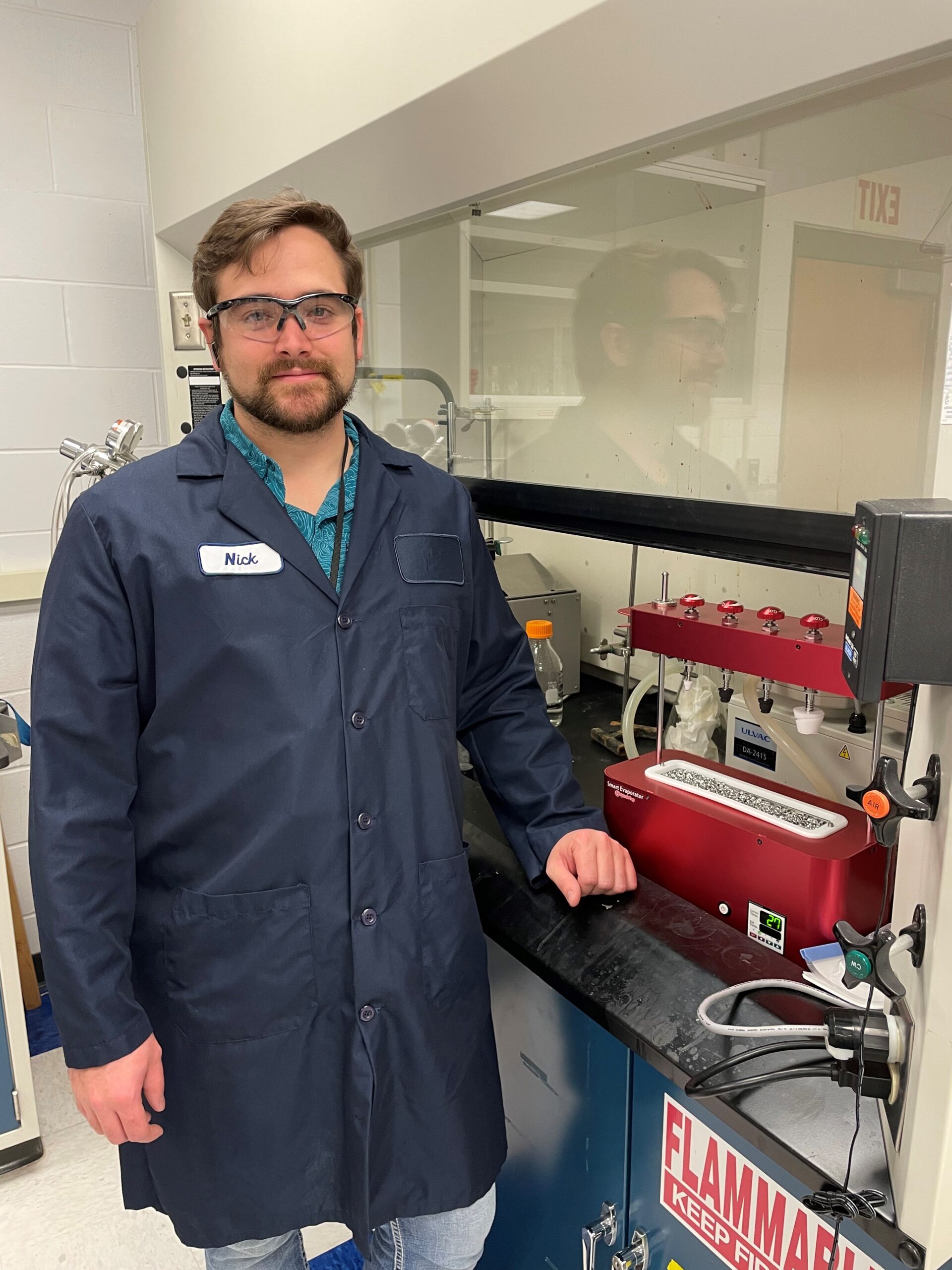Faster evaporations of extractions
and less monitoring of the process!
Testimonial interview with Mr. Kasel Nicholas from Donaldson Filtration Solutions
The Smart Evaporator K4 is being used. (4-position Evaporator)

Q1. What is your research activity?
A:Our research activity involves the extraction of various materials. With the use of the SmartEvap, we can concentrate the extractions and bring some down to dryness if reconstituting in a different diluent is required depending on means of analysis (GC/LC). We now have the capability to extract polar compounds and run analysis by GC without having to worry about the normal problems using water can have during GC injections. Low concentration analytes can be made easily detectable and can be quantified accordingly. The low temperature evaporation process helps to keep sensitive compounds in solution without causing chemical reactions or denaturing target analytes. Our research is mostly around unknown identification.
Q2. What is a significant improvement or what is a change compared with before and using the Smart Evaporator?
A:Faster evaporations of extractions and less monitoring of the process. Samples are secure and easily adjusted.
Q3. How do you make your sample concentrated (evaporate your sample) before using the Biochromato product?
A:Nitrogen blow down techniques and heating plates if necessary.
Q4. How did you know BioChromato Smart Evaporator?
A:My manager had used Smart Evaporator at previous position.
Q5. What kind of process do you have before and after using the Smart Evaporator?
A:The process before can vary greatly. It is started following general leachable/extractable protocols and then cleaning up the sample matrix. Samples after are either reconstituted in a desired diluent or brought to a lower volume to enhance detection on low concentrated analytes.
Q6. What is the experiment condition of concentration on the above process?
A:Low temperature evaporation to test for semi-volatile and non-volatile compounds. Vials range from glass (low absorption) to PTFE and PP tubing. Solvent types range from polar (water) to weak non polar solvents like IPA. DMF used on occasion, but can likely only use the fluorinated spiral tubes when using this solvent as it melts many different polymers including PTFE. Do not want to cause issues with diaphragm pump, so this solvent will not be used on the evaporator system. Use for DMSO evaporation possible in the future. Temperature varies on the boiling point of the solvent, lower temperature evaporation is now possible using the Smart Evap. 20mL is generally the volume we will work with during the evaporation process.
Q7. What is the advantage point (valid/practical point) of the Smart evaporator?
A:Low temperature evaporation of high boiling point solvents to prevent decomposition of sensitive analytes.
Q8. Do you have any improvement requests for the Smart Evaporator after you have used it?
A:I would possibly add more instructions on recommended setting for solvent evaporation when adjusting vacuum. Is splash from the spinning effect a possible risk or does the design mitigate cross contamination and loss of analyte?
■Interested in what Smart Evaporator is? You can learn from here!
■Product details of Smart Evaporator K4 (4 channel evaporator)
